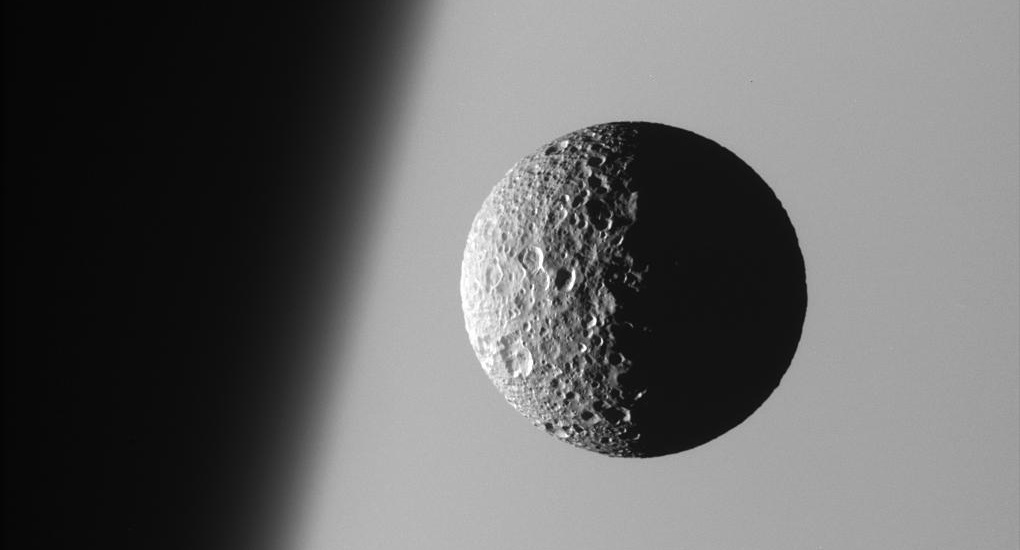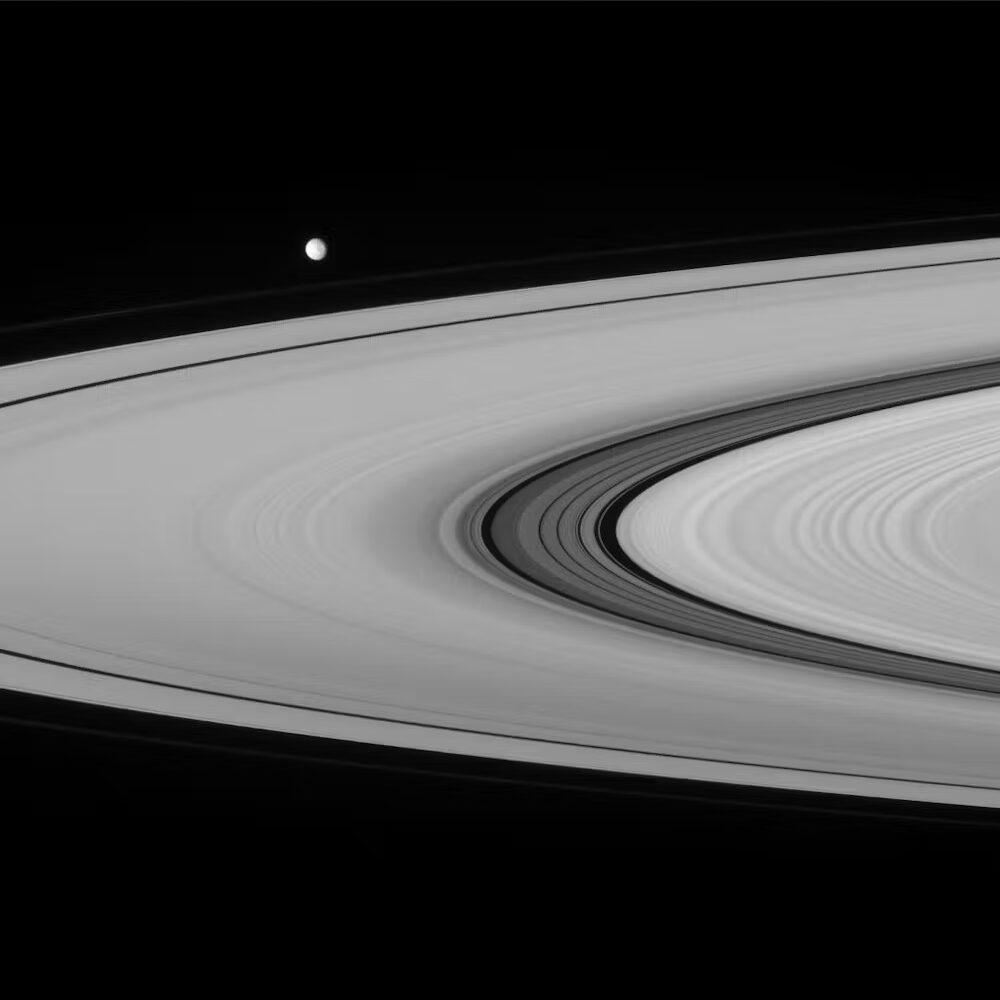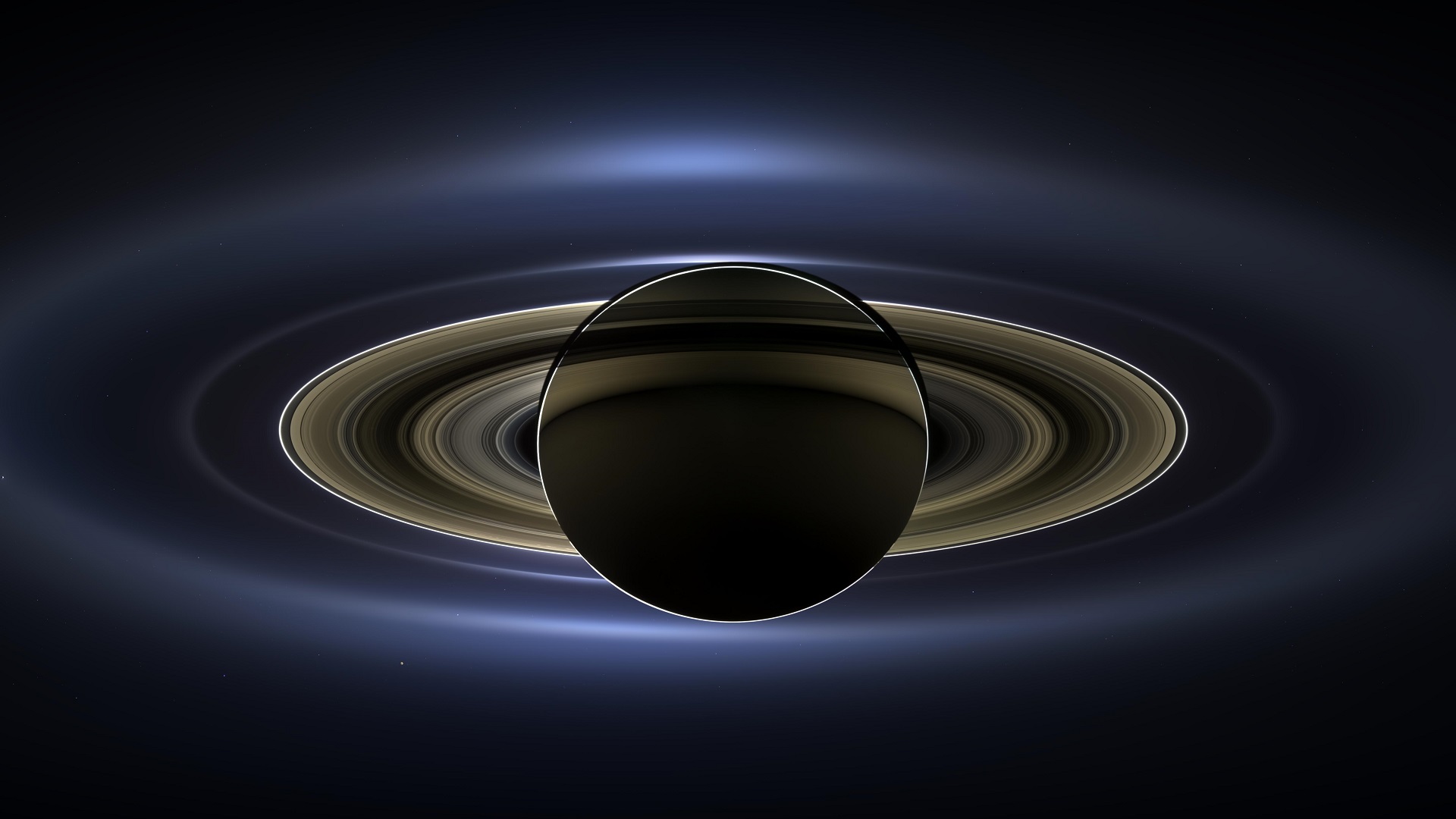Mimas, a moon of Saturn, has an ocean of liquid water beneath its surface, like Enceladus. A discovery made official at the beginning of 2024, commented on in this article from The Conversation.
After a ten-year suspense following the discovery of an anomaly in its rotation, proof has finally been made that Mimas, the smallest of Saturn's eight main moons, harbors an ocean of water beneath its entire surface. Even more astonishing, this ocean would be less than 25 million years old, almost nothing, compared to the 4.5 billion years of our solar system. This surprising discovery is the result of a long work, but also of an intuition going against the main ideas accepted until now on the evolution of the Saturn system.
Advertisement
It was in 2010 that our team began to question the real nature of Mimas. With a radius of 200 km, the smallest of Saturn's so-called main moons is easily recognizable by its surface covered in craters. Discovered in 1789 by the British astronomer William Herschelwe will have to wait for the space age to obtain the first resolved images of this moon, and thus be able to discover its inert surface.

Understanding Saturn's rings by studying the moon Mimas
The link between Mimas and our initial work was not immediate, since it involved explaining the most remarkable structure of Saturn's rings: the Cassini division. Discovered by Jean-Dominique Cassini in 1675, then a very young director of the Paris observatory, he had observed a dark zone in the rings of the giant, which now bears his name. With a span of approximately 4,500 km, it literally cuts the rings into two very distinct parts.


As surprising as it may seem, the scientific community did not know how to explain the existence of this division in 2004, when the Cassini probe arrived in the vicinity of Saturn. However, by studying the movement of its moons, we considered the possibility that this very particular formation could be the consequence of a drastic change in the distance between the small moon Mimas and Saturn. Indeed, it had long been known that the presence of Mimas had a significant gravitational effect on the inner edge of the Cassini division.
Specifically, we knew that the small ice particles that make up Saturn's rings and which lie at the inner edge of the divide rotate exactly twice as fast as Mimas orbits Saturn. It is precisely this synchronization that allows gravity to have a major effect on the rings at this location, because the gravitational disturbance of Mimas accumulates, rather than averaging over time. Our intuition was then the following: if in the recent past, Mimas had moved closer to Saturn, the ice particles caught in the resonance should have been driven inwards, following the approach of Mimas to Saturn, and thus opening the famous division.
Advertisement
The mystery of Mimas’s entrails?
As attractive as it was, this idea ran into a major problem. For Mimas to get closer to Saturn, the only possible mechanism had to be the tidal effects generated by the planet. Just as the Moon deforms the Earth, including the oceans on its surface, creating tides, Mimas is deformed by Saturn over time. This deformation, which we call tidal effect, comes from the fact that the side of Mimas which faces Saturn is closer, and therefore more attracted by the planet, than the opposite side.
However, the ice of which Mimas is mainly composed would necessarily have melted in very large quantities because of the internal friction which would have resulted from these tidal effects. This hypothesis was in complete disagreement with the extremely cratered and inactive surface of Mimas, which implied the absence of internal activity. Indeed, the presence of a quantity of liquid water under the surface of Mimas should have resulted in the existence of surface faults, renewal of its surface, or even geysers as observed on Enceladus, a neighboring moon of Mimas.
However, in 2014, Radwan Tajeddine, then a thesis in our team, noticed that the rotation of Mimas on itself was affected by an anomaly. Theoretical explanations suggested two possibilities: either the interior of Mimas was rigid, but hid a very elongated core of rock; or there must have been a global ocean of water beneath the surface of the satellite. This result published in the journal Science was the first mention of a possible ocean of water under Mimas.


Two hypotheses: an internal ocean or a long core of rock
Over time, the vast majority of the international community adopted the hypothesis of an elongated core of rock. This fit perfectly into the vision of a cold and inactive moon, in perfect agreement with its impact-riddled surface. Our team therefore had to get to the bottom of it, because the explanation for the existence of the Cassini division was only compatible with the presence of an ocean. We therefore looked for a way to obtain additional information on the interior of the satellite.
We then turned to the orbital movement of Mimas around Saturn. This is very complex due to the numerous gravitational disturbances it undergoes from neighboring moons. However, a quick calculation suggested that the observation of the orbital evolution of Mimas by the Cassini probe, in orbit around Saturn between 2004 and 2017, should make it possible to decide between the two models of internal structure.


Tens of thousands of photos reviewed
This is how we took all the available data (several tens of thousands of images) and adjusted the movement of nineteen moons in the orbital system, including of course Mimas, to Cassini's observations. The analysis left few doubts: a rigid interior with an elongated rocky core is not compatible with the observation of the orbital movement of the moon. On the other hand, the modeling of an interior comprising three internal layers, namely a rocky core overhung by an ocean of liquid water, covered by an ice shell is in agreement with observations if the thickness of the ice layer solid is between 20 and 30 kilometers. These values also help to understand why the surface of the moon does not show activity at the moment.
We now know that more than half of the volume of Mimas is composed of liquid water. Furthermore, calculations of the orbital evolution of Mimas under the action of tidal effects imply that this ocean is less than 25 million years old. But what makes the existence of this ocean so interesting is that we never imagined we would one day detect liquid water beneath such an ancient and inert-looking surface. This is enough to cast doubt on the possibility of having liquid water under many other objects in the solar system. The quest for liquid water in our system and its habitable conditions has only just begun…


Valéry LaineyAstronomer at the Paris-PSL observatory, Sorbonne University
This article is republished from The Conversation under Creative Commons license. Read theoriginal article.
See the world from space
